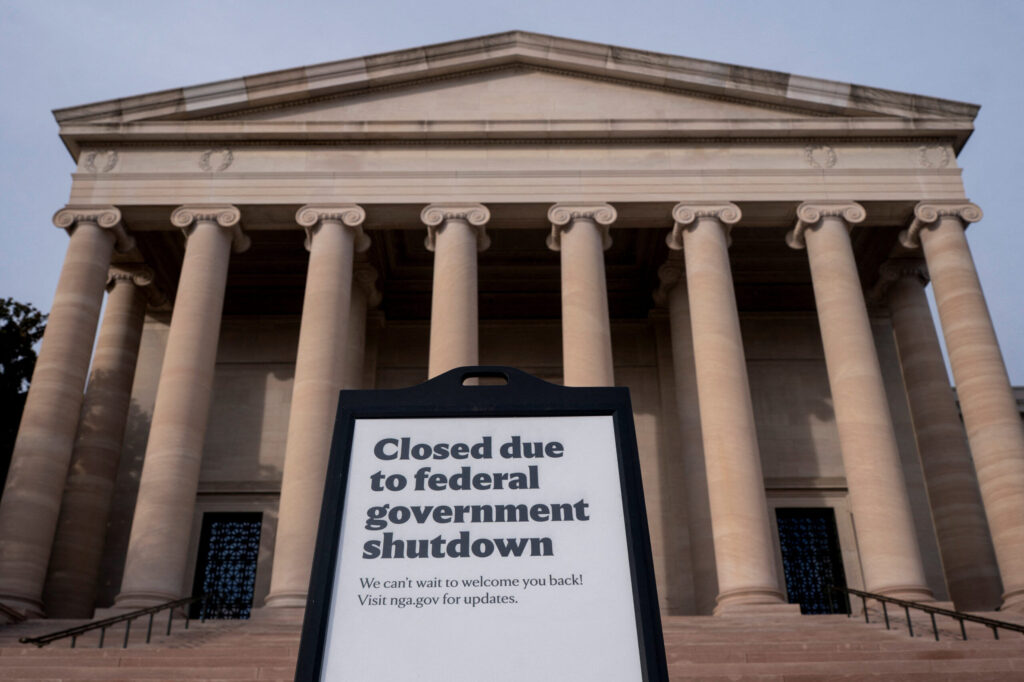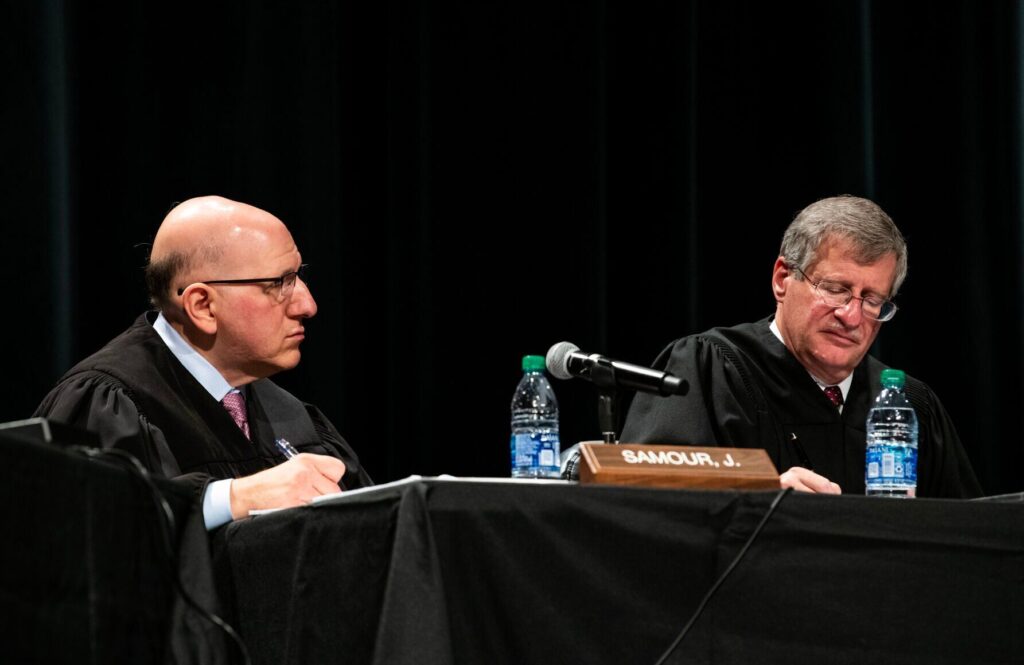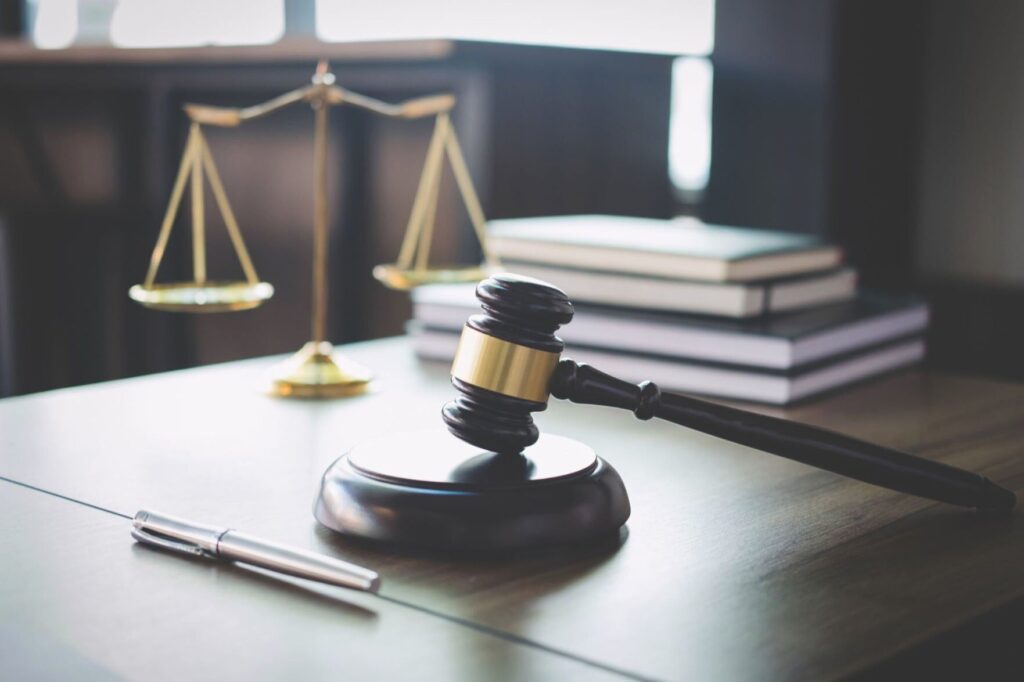Colorado River management proposals receive mixed reactions, with hints of possible legal battle
The U.S. Department of the Interior’s alternative proposals to guide the management of the Colorado River received mixed reactions from key negotiators and officials whose support is crucial in the river’s successful operation in the years to come.
Several reiterated they don’t want litigation, which would tie up any plans in the court systems for years, but they also acknowledged — or at least hinted — that a legal battle is a plausible outcome.
“We don’t want a legal fight,” said Tom Buschatzke, the Arizona Department of Water Resources director.
“We want the process that we’re currently involved in to be concluded” by all seven states, the 30 tribes, the nongovernmental organizations, recreationists, and others, much like what happened in 2019 with the drought contingency plan, said Buschatzke, who is his state’s chief negotiator on matters related to the Colorado River.
That contingency plan, he said, drew in broad support to get Congressional legislation approved in record time.
“That’s still my goal and still the goal of the state of Arizona,” he said.
On Wednesday, the Department of the Interior announced four alternatives — plus one that won’t be considered — that will be analyzed next month as a foundation for the post-2026 operating guidelines for the Colorado River.
The Bureau of Reclamation manages the river’s reservoirs and dams, but operating guidelines that have been in place since 2007 are set to expire at the end of 2026. Since 2021, the bureau and the seven basin states have been devising short-term fixes with an eye on new guidelines for the beginning of 2027.
U.S. Sen. John Hickenlooper, D-Denver, who has sponsored legislation to fund the Upper Colorado River Commission’s system conservation program, also recoiled at the possibility of litigation.
“(These) proposed alternatives underscore how serious a situation we’re facing on the Colorado River,” he said. “The only path forward is a collaborative, seven-state plan to solve the Colorado River crisis without taking this to court.
“Otherwise, we’ll watch the river run dry while we sue each other,” he continued.
The river stretches from Colorado to Mexico, providing water to more than 40 million people and billions of dollars in economic activity, including agriculture and hydropower from two dams.
But drought over the last 20 years has “stolen” 10 trillion gallons from the basin, according to Ali Zaidi, Joe Biden’s assistant and the White House’s climate advisor.
That drought has caused critical water shortages at the nation’s two largest reservoirs — Lake Powell, which serves the Upper Basin states of Colorado, New Mexico, Utah, and Wyoming, and Lake Mead, which serves Arizona, Nevada, and California.
The Interior’s announcement on Wednesday pointed to four main alternatives:
• A “federal authorities” alternative designed “to achieve robust protection of critical infrastructure within the Department and Reclamation’s current statutory authorities and absent new stakeholder agreements.”
Lake Powell releases would be determined based on elevations, ranging from 5 million acre-feet to 9.5 million acre-feet. Releases under 5 million acre-feet would protect Glen Canyon dam’s infrastructure.
The operations also incorporate basin-wide shared contributions to the system’s sustainability, including Upper Basin conservation that would be stored in Lake Powell and Lower Basin shortages starting at 1.5 million acre-feet, which exceeds average annual evaporative and system losses at and below Lake Mead and which reaches a maximum of 3.5 million acre-feet.
• A “federal authorities hybrid” that incorporates proposals submitted by tribal nations, federal agencies, and other stakeholders “to achieve robust protection of critical infrastructure, while benefiting natural, hydropower and recreation. This would incorporate a new approach to distributing storage between Lake Powell and Lake Mead that enhances the reservoirs’ ability to support the Basin, according to the bureau. It looks at the entire basin with increased cooperation among the states, said Reclamation Commissioner Camille Calimlim Touton.
• A cooperative conservation proposal from non-governmental organizations and conservation groups they said would stabilize system storage, integrate stewardship and mitigation strategies of Lakes Powell and Mead, maintain opportunities for binational cooperative measures, incentivize water conservation, and design flexible water management strategies, the statement said. It looks at commonalities, Touton said.
• A “basin hybrid” that is based on the proposals submitted by the upper and Lower Basin states and tribal nations and which would “provide a basis for coordinated operations and may facilitate greater agreement across the Basin.”
Buschatzke, who talked to reporters on Wednesday afternoon, initially offered a positive take. But he also sharply criticized the alternatives, which he said ignored the proposal submitted by the Lower Basin states last March.
The Arizona official said that since the proposals are very detailed — they included specifics about how things might work regarding releases to Powell to Mead, reductions in the Lower Basin, and conservation in the Upper Basin — he hadn’t entirely digested them yet.
He said these alternatives have some positive elements, such as moving water from the four major Upper Basin reservoirs to Lake Powell to protect the lake’s infrastructure.
But he is disappointed that the Bureau of Reclamation chose to create alternatives rather than model the Lower Basin state’s plan in its entirety. Elements were removed from that Lower Basin proposal, but he said it was designed and submitted as a package.
He argued that a reasonable alternative started in the “middle” regarding a potential upper and Lower Basin combined alternative.
“And it showed unequivocally that the Lower Basin was willing to take the first tranche of cuts, asking the Upper Basin to participate if more cuts were needed,” he said.
As for a “compact” call, which would require more water to be sent down the river to the Lower Basin states, Buschatzke said there could be a situation where deliveries are not being met because of “bad hydrology” as soon as 2027.
Buschatzke hopes that continued discussions with the federal team, state tribes, and stakeholders “can move the needle forward.” He didn’t want to speculate on why the bureau decided to release those alternatives now instead of waiting until December or later, but he also regarded that as a positive development.
He said that litigation is not a desired outcome for Arizona, but that scenario was brought up in a meeting on Monday. And there’s still a pretty wide gap between the two basins. The word “conservation” comes up when talking about the Upper Basin, he explained, and that often refers to reductions. The Lower Basin states put in their proposal cuts of 1.5 million acre-feet, but if more is needed, how will the Upper Basin states participate?
“We’re not asking that all to be done by the Upper Basin,” he said.











